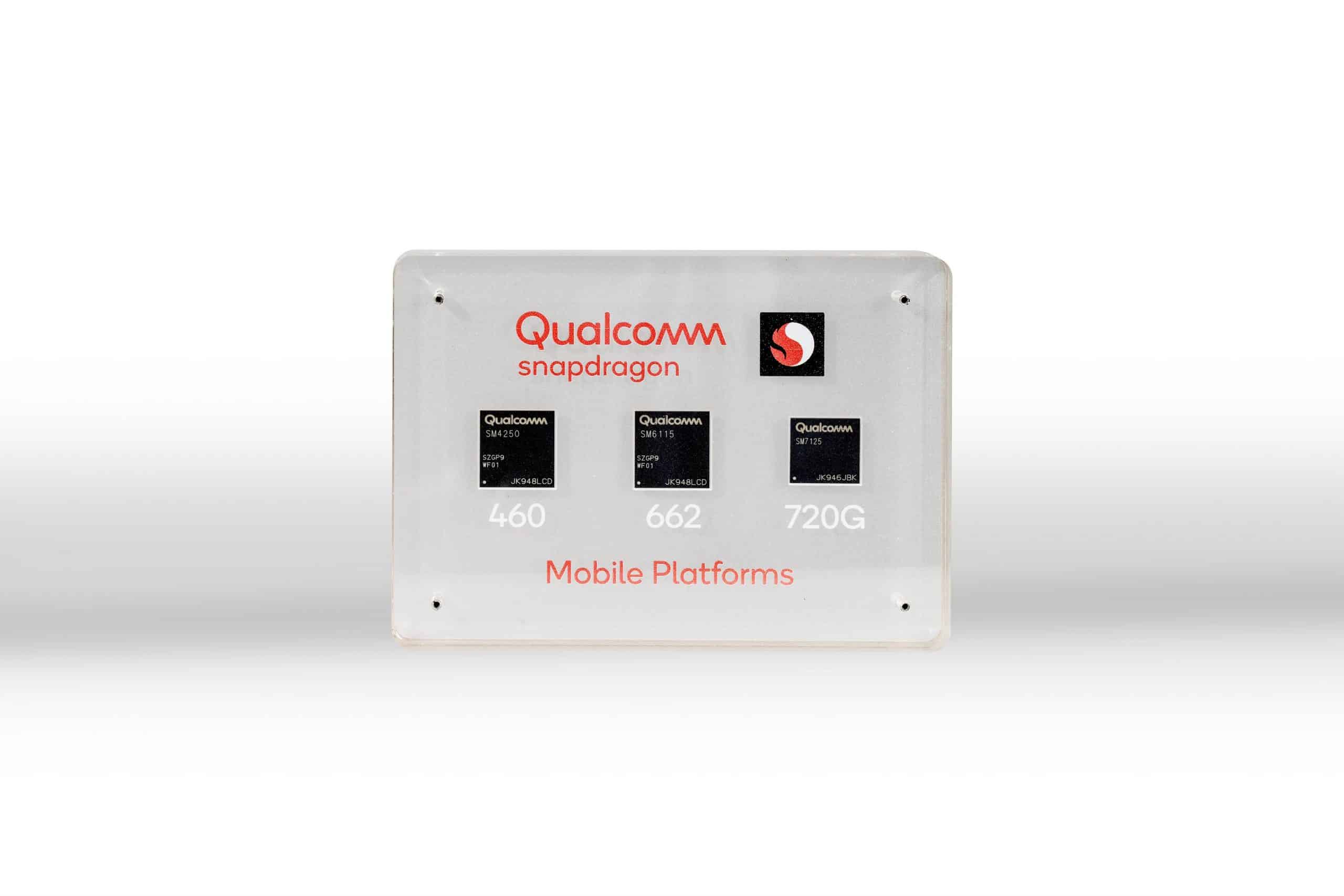The News: Qualcomm Technologies, Inc. announced the launch of three new mobile platforms: the Qualcomm® Snapdragon™ 720G, 662 and 460, which will enable enhanced user experiences across connectivity, gaming and entertainment. These new mobile platforms enable fast 4G connectivity speeds, deliver key Wi-Fi 6 features and integrated Bluetooth 5.1 with advanced audio via the Qualcomm® FastConnect™ 6-series subsystems, support Dual-Frequency (L1 and L5) GNSS to improve location positioning accuracy and robustness, and are the first system-on-chip solutions to support Navigation with Indian Constellation (NavIC). Designed to deliver new and improved AI user experiences across photography, voice assistants, and virtually always-on scenarios for increased contextual awareness, these new platforms also feature the Qualcomm® AI Engine and Qualcomm® Sensing Hub. Read the full press release on Qualcomm.
Analyst Take: There are plenty of simple ways to wrap your arms around the specs of these new Snapdragon mobile platforms, but I wanted to spend a little time talking about why Qualcomm, the company that is propelling 5G in the U.S. and across most parts of the globe is busy rolling out a series of new 4G Platforms.
If you’ve been paying much attention to the 5G narrative, you will have noticed the camps that are fully bought in and those that feel confident that pervasive 5G is further away. Having said that, the right answer is that 5G is here, but broad 5G deployments embracing both Sub 6 and mmWave are a bit further away and in the meantime, many mobile users will be best served by 4G and advanced LTE. Furthermore, in some markets, 5G may not exist at all for a period of time, but device makers will want to offer the best possible devices at a variety of prices to support the 4G networks that are available in these areas. This is where Qualcomm is seeing a large opportunity, and the launch being made in India was indicative of the vision of Qualcomm to be proactive in continuing to support 4G platforms as 5G grows in availability and adoption.
A Quick Look at the 3 New Qualcomm Snapdragon Platforms for 4G
Qualcomm’s new launch included an update to its 7 series, 6 series and 4 series.
The 7 series is designed to enable a powerful gaming device for 4G networks. It supports Wi-Fi 6 and has huge improvements in battery life over previous generations.
The 6 series has been focused on enabling the more moderately priced platform to embrace on-device AI and a triple camera configuration. This will allow lower cost devices to offer these advanced camera configs and to utilize AI in a number of ways including avatars, night photography and facial recognition.
The 4 series offering will share the X11 LTE modem that will also be featured in the new 6 series, but the biggest focus for the new 4 series, which is the platform used in more than 2500 commercial devices, will be increased power of 70 and 60% respectively of the CPU and GPU architectures.
As mentioned in the news overview at the top–platform details can be caught in depth in the release, but I wanted to point out a few of the key value propositions of the new platforms.
Overall Impression of Qualcomm’s Launch and Ongoing Commitment to 4G
The decision for Qualcomm is stunningly simple. 4G and Advanced LTE networks aren’t going anywhere. Anyone that has still caught the occasional 3G network can attest to the longevity of these networks. The future is multi-mode–both for 5G and dynamic spectrum between mostly 4G and 5G. Today, there are still a lot of areas where 5G isn’t and those places will want to be be able to offer the most advanced devices possible today, without asking consumers to pay for 5G technology. This will enable device makers to build more powerful, lower price devices and will give consumers greater choice. Within one or two device generations, this discussion will likely change, but today we are in a state of transition and for Qualcomm to support the transition shows a broad understanding of the evolution of networks and the needs of their OEMs, Partners and the end users.
Futurum Research provides industry research and analysis. These columns are for educational purposes only and should not be considered in any way investment advice.
Read more analysis from Futurum Research:
Apple’s Acquisition of Xnor.ai Aims to Deliver TinyML to Edge Devices
IBM Fiscal Q4 Results Driven By Strong Systems Performance
Oracle Customer Insights Shows Promise of Predictive Analytics and AI
Image Credit: Qualcomm
Author Information
Daniel is the CEO of The Futurum Group. Living his life at the intersection of people and technology, Daniel works with the world’s largest technology brands exploring Digital Transformation and how it is influencing the enterprise.
From the leading edge of AI to global technology policy, Daniel makes the connections between business, people and tech that are required for companies to benefit most from their technology investments. Daniel is a top 5 globally ranked industry analyst and his ideas are regularly cited or shared in television appearances by CNBC, Bloomberg, Wall Street Journal and hundreds of other sites around the world.
A 7x Best-Selling Author including his most recent book “Human/Machine.” Daniel is also a Forbes and MarketWatch (Dow Jones) contributor.
An MBA and Former Graduate Adjunct Faculty, Daniel is an Austin Texas transplant after 40 years in Chicago. His speaking takes him around the world each year as he shares his vision of the role technology will play in our future.







